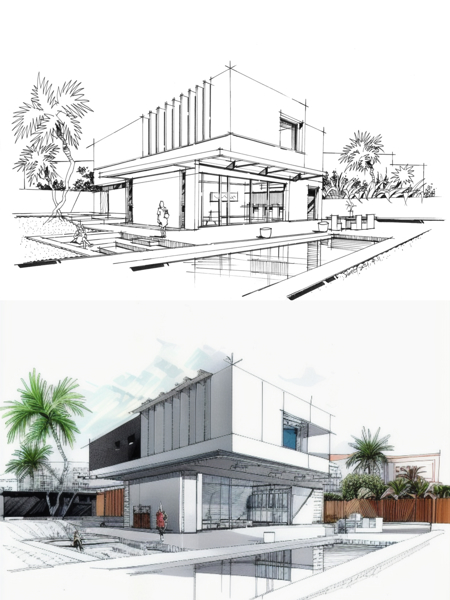Transforming Rooms: The Vision of CDA Architects for Modern Living
Transforming Rooms: The Vision of CDA Architects for Modern Living
Blog Article
The Important Role of an Engineer in Shaping Sustainable Urban Settings for Future Generations
The function of a designer in crafting lasting metropolitan environments is significantly pivotal in reacting to the challenges of environment adjustment and urbanization. By flawlessly integrating eco-friendly concepts into their designs, architects not only improve the visual and useful top quality of urban spaces however also address pressing issues such as energy performance and social equity.
Comprehending Sustainable Urban Design
Lasting urban design integrates eco-friendly principles with city preparation to develop settings that are not just livable but additionally resilient. This technique highlights the value of incorporating all-natural systems into the city material, ensuring that development satisfies the needs of today without jeopardizing the ability of future generations to satisfy their very own demands. Secret components of sustainable metropolitan style consist of effective land usage, the promotion of biodiversity, and the integration of eco-friendly areas, every one of which add to boosted high quality of life for homeowners.
In addition, lasting metropolitan design prioritizes the reduction of the metropolitan warm island impact, improved air quality, and efficient stormwater management. It motivates the usage of renewable energies and energy-efficient structure methods, which significantly reduced carbon impacts. Additionally, sustainable metropolitan style fosters social equity by producing obtainable public rooms and advertising mixed-use growths that satisfy diverse populaces.
Via thoughtful preparation and innovative layout techniques, lasting urban environments can enhance area strength versus climate change while fostering financial growth. This all natural technique not just addresses instant metropolitan obstacles yet additionally lays the foundation for much healthier, a lot more sustainable cities for generations to find.
Secret Obligations of Engineers
Architects play an essential duty in shaping lasting metropolitan atmospheres by equating style concepts into concrete frameworks and spaces. Their responsibilities include a variety of tasks that contribute to the overall success of metropolitan layout projects.
Most importantly, engineers perform comprehensive website analyses to recognize the ecological, social, and cultural context of their projects. This foundational expertise notifies their design choices, making sure that buildings integrate with their surroundings. They also involve in collective procedures with stakeholders, including city coordinators, engineers, and the community, promoting a comprehensive approach to metropolitan advancement.
Furthermore, engineers are entrusted with developing designs that optimize energy efficiency, resource preservation, and capability. They need to stick to local zoning legislations, building codes, and sustainability certifications, making sure conformity while pushing the borders of advancement.

Innovative Products and Techniques
In the pursuit of eco responsible design, cutting-edge products and strategies have actually emerged as crucial aspects in the development of sustainable urban settings. Engineers are progressively making use of products that minimize ecological impact while improving energy performance. Recycled products, such as reclaimed timber and repurposed steels, not just minimize view it waste but also add one-of-a-kind visual high qualities to structures.
In addition, developments in innovation have actually brought about the advancement of high-performance materials, such as insulated concrete kinds (ICFs) and photovoltaic or pv glass, which contribute to energy preservation and harness renewable resource. Strategies such as easy solar layout and environment-friendly roofs better exemplify how style can balance with natural systems, reducing reliance on man-made heating and cooling.
In addition, the combination of smart materials, which adjust to ecological modifications, supplies promising methods for boosting structure efficiency - cda architects. These materials can react to temperature changes or wetness levels, optimizing convenience and sustainability
Ultimately, the strategic selection and application of innovative materials and techniques equip designers to create city spaces that are not just functional and visually pleasing however likewise durable and eco responsible, guaranteeing a lasting future for generations to come.
Neighborhood Involvement and Partnership
The success of innovative products and techniques in sustainable city style is substantially enhanced by active neighborhood involvement and partnership. Engineers need to acknowledge that the constructed atmosphere profoundly influences the lives of local homeowners, making it necessary to entail them in the layout process. Involving the community promotes a sense of possession and responsibility, making certain that developments not just satisfy visual and useful needs yet likewise mirror the values and desires of those who occupy them.

Effective neighborhood involvement likewise helps in focusing on social equity within metropolitan development. By taking into consideration the voices of marginalized populaces, engineers can develop rooms that are comprehensive and find more information fair. By doing this, community involvement and partnership come to be indispensable to attaining truly sustainable city atmospheres that serve the requirements of present and future generations.
Future Fads in Lasting Design

Additionally, improvements in technology are shaping future trends in lasting architecture. The integration of wise materials and building systems permits real-time energy management, improving efficiency and minimizing carbon blog footprints. Technologies such as green roofings, living wall surfaces, and energy-generating exteriors are coming to be basic techniques, even more advertising eco-friendly equilibrium within urban environments.
Furthermore, a shift towards biophilic layout is getting grip, emphasizing the connection between nature and human wellness. By including natural environments, designers develop spaces that cultivate mental wellness while advertising biodiversity.
Conclusion
Finally, designers are critical in advancing lasting metropolitan environments via their competence in layout, innovative materials, and community engagement. By prioritizing power efficiency and source conservation, these experts contribute to the production of resistant city spaces that fulfill the needs of present and future generations - cda architects. The assimilation of ecological concepts not only improves livability however additionally promotes social equity, making certain advancements resonate with the worths and desires of the areas they serve
Report this page